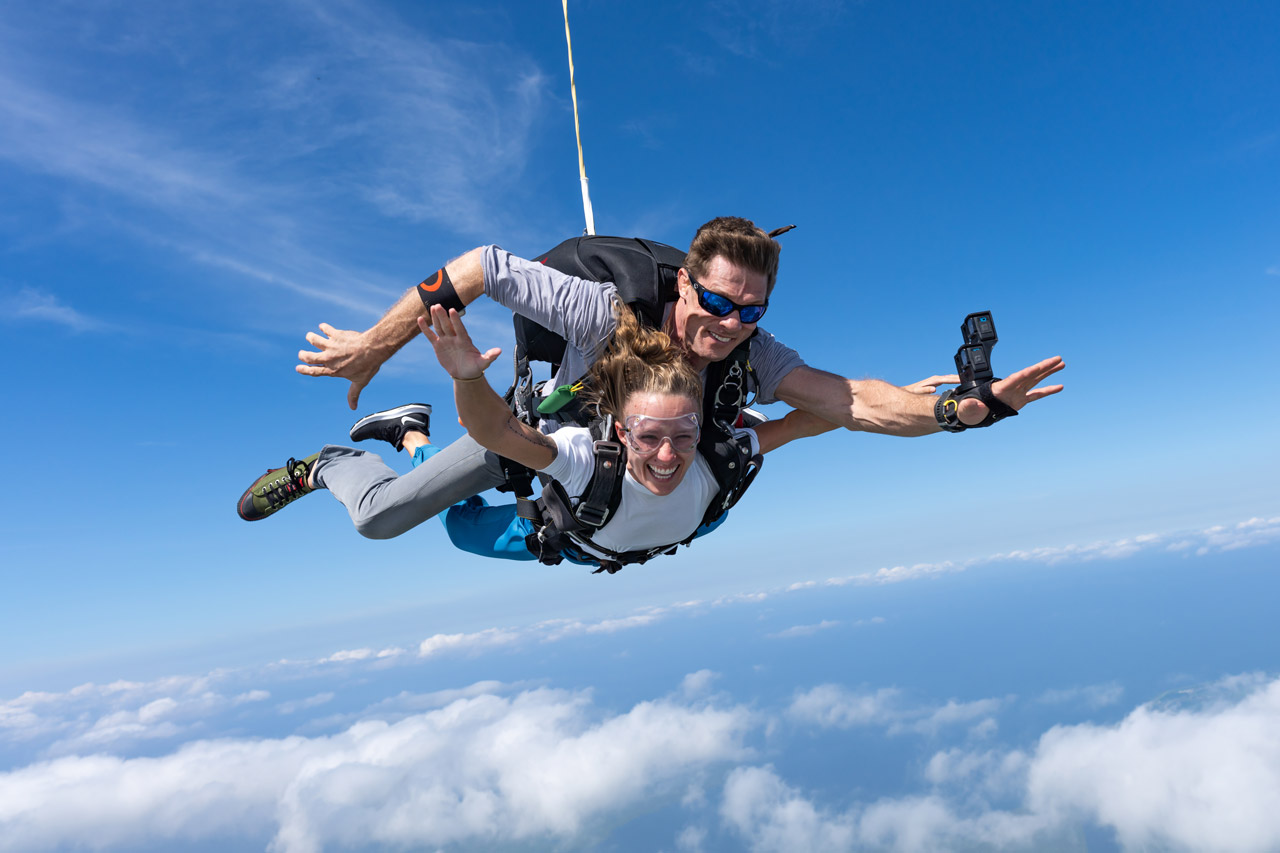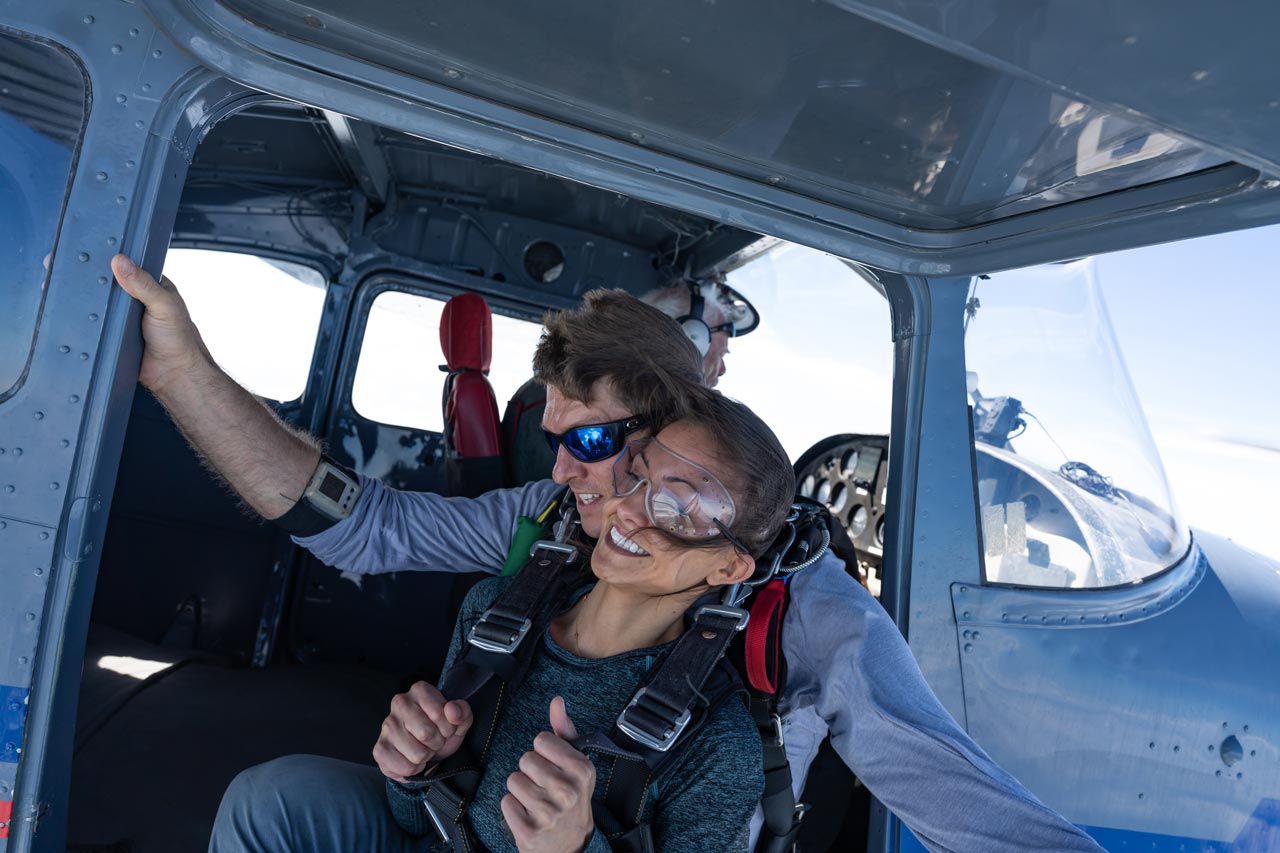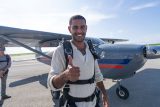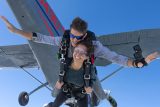How High Do You Skydive From?
Skydiving
Posted by: Skydive Palm Beach
6 months ago
Dreaming of the thrill of freefall? You’re not alone! One of the biggest questions for first-time skydivers is “How high do you skydive from?” The altitude for most tandem skydives is between 10,000 and 13,000 feet, but the answer isn’t always so clear-cut. Factors like the dropzone’s location, weather, and aircraft type can all play a role in determining what height you skydive from. In this article, we’ll explain the key differences between AGL and ASL, discuss maximum and minimum jump altitudes, and cover what to expect from various aircraft.
AGL vs ASL: What’s the Difference?
When understanding how high up you skydive from, being aware of a couple of abbreviations can be useful. ASL stands for Above Sea Level and refers to the elevation where your jump starts. AGL, or Above Ground Level, measures how high you are above the ground when you exit the plane. So, a starting elevation that’s at sea level will have the same ASL and AGL. But if a dropzone has a starting elevation of 1,500 feet ASL and you jump from 13,000 feet ASL, your altitude above the ground (AGL) would be 11,500 feet.

We don’t have to worry about ASL versus AGL in Florida where most of the state is close to sea level, but it’s good to know if you’re jumping over more diverse terrain. For example, if two nearby dropzones advertise different jump altitudes – say one lists 13,000 feet and the other 11,500 feet – they could actually be offering the same jump height but presenting it in ASL versus AGL! Understanding this nuance can help you make an informed choice when choosing a dropzone.
For this article, we’ll go on from here with just “feet” as ASL and AGL are pretty much the same across the Sunshine State.
Maximum & Minimum Jump Altitudes
What is the highest height you can skydive from? Per the USPA (United States Parachute Association), supplemental oxygen is required for all jumps over 15,000 feet – which is why most jumps take place below this threshold. Some dropzones offer the option for jumps over 15,000 feet – known as High Altitude, Low Opening, or HALO, jumps – but it’s a specialty experience that is not commonly available, especially to tandem skydivers.
Want to talk extremes? The current Guinness World Record for the highest tandem skydive currently sits at 42,018 feet! Phew!!
On the lower end, minimum jump altitudes vary based on experience. An experienced, licensed skydiver, for instance, can deploy their parachute as low as 2,500 feet. For tandem jumps, though, the minimum exit altitude is 7,500 feet and the parachute must be deployed by 5,000 feet. In some cases, such as unexpected weather, a lower exit altitude may be required to allow for clouds.
Be aware that some dropzones offer these lower tandem skydives at a premium price and use tricky labeling such as “ground rush tandems”. While perhaps exciting, these jumps don’t provide the extended freefall experience many skydivers seek – and that we prioritize at Skydive Palm Beach. It’s worth understanding what you’re paying for.
Skydiving Aircraft
The type of aircraft used for your jump plays a major role in determining your jump altitude and overall experience. At Skydive Palm Beach we fly a Cessna 182, which is a staple at many dropzones due to its reliability, efficiency, and suitability for smaller groups of jumpers. They’re perfect for scenic climbs to altitudes of around 10,000 feet, offering plenty of height for an incredible freefall experience that lasts about 40 glorious seconds.
Larger aircraft, such as the Cessna 208 Caravan, Twin Otter, or King Air, are typically found at high-volume or larger dropzones that cater to solo skydivers. These planes are equipped with powerful engines that allow them to reach higher altitudes – 14,000 feet and up – quickly and efficiently.
Each type of aircraft offers its own unique experience. Smaller planes provide a cozy ride to altitude with breathtaking views, while larger planes bring the excitement of a bustling dropzone atmosphere and the potential for higher jumps. Whatever the plane, the thrill of freefall and views from the top are unforgettable.

Flight Restrictions & Skydiving Altitudes
Another factor influencing skydiving altitudes is airspace restrictions. Dropzones operate within designated airspaces and, in some areas, nearby airports, no-fly zones, or military airspace can limit how high planes can climb.
For example, a dropzone located near a major airport might cap jumps at lower altitudes to avoid interfering with commercial air traffic. These restrictions ensure safety and compliance with Federal Aviation Administration (FAA) regulations.
Ready to Take the Leap?
Skydiving is more than just a jump from a plane – it’s an awe-inspiring adventure that starts the moment you take off and ends with memories to last a lifetime! Now that you know all about how high you jump from skydiving, you can feel confident and ready to make your dream of flight a reality. Book your tandem skydive today! Blue skies!
Categories:
You May Be Interested In:

Can You Talk While Skydiving?
3 weeks ago by Skydive Palm Beach

The Most Unforgettable Engagement Idea, EVER!
1 month ago by Skydive Palm Beach

3 Phases of Skydiving: What Happens After You Exit the Aircraft?
2 months ago by Skydive Palm Beach

What Happens After the First Jump?
2 months ago by Skydive Palm Beach
